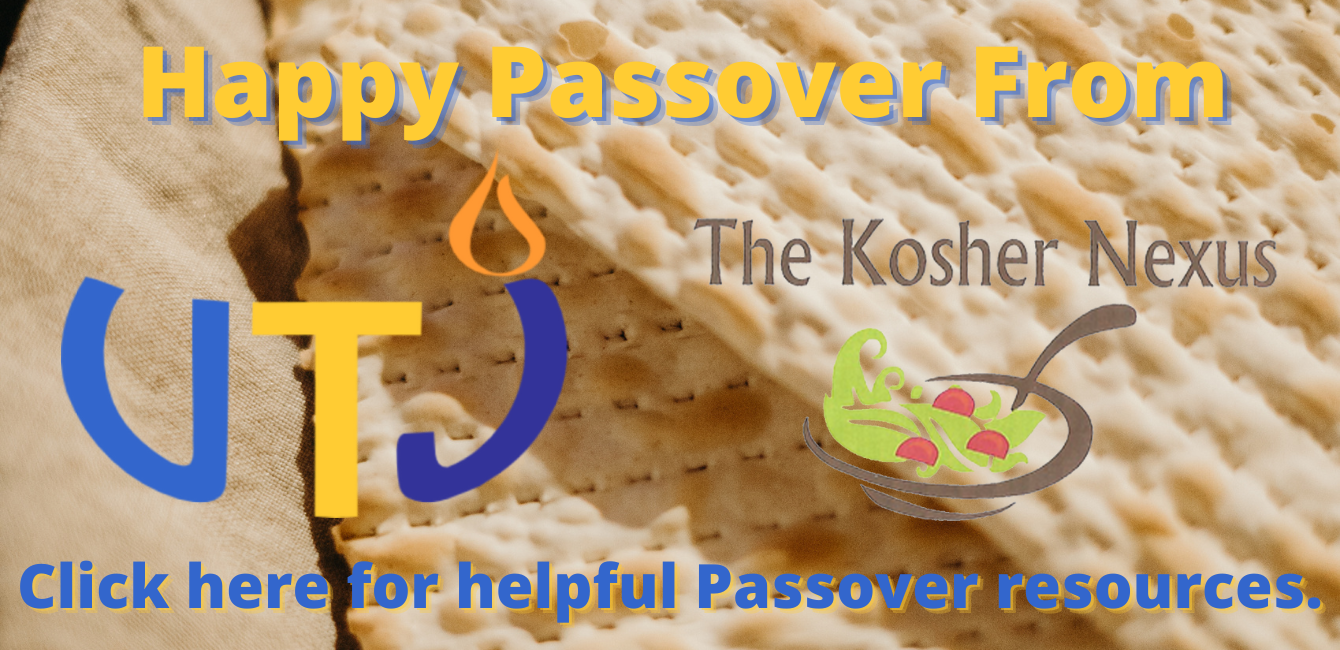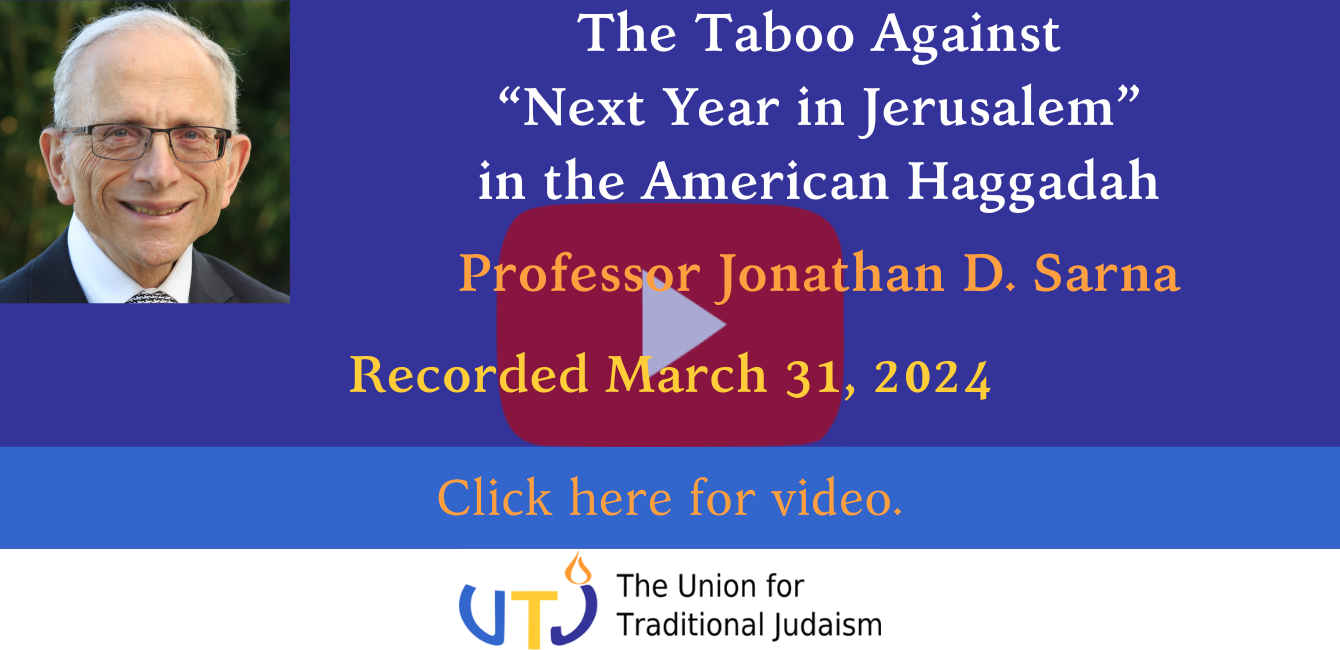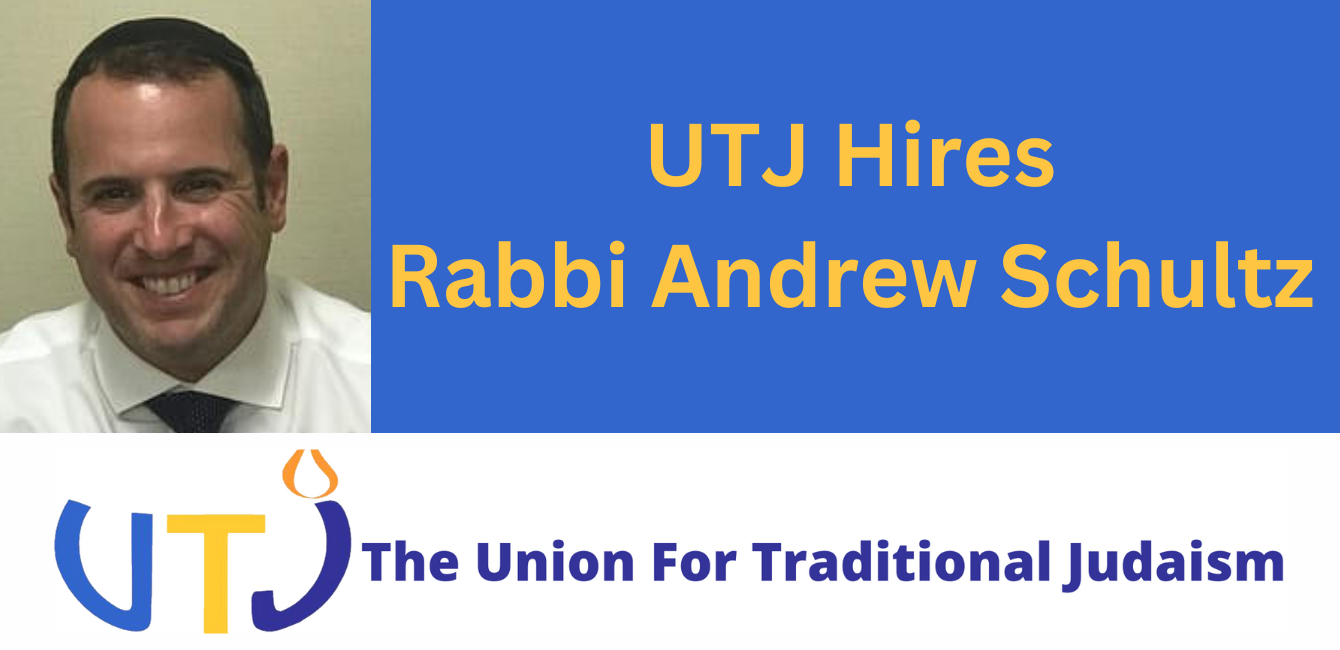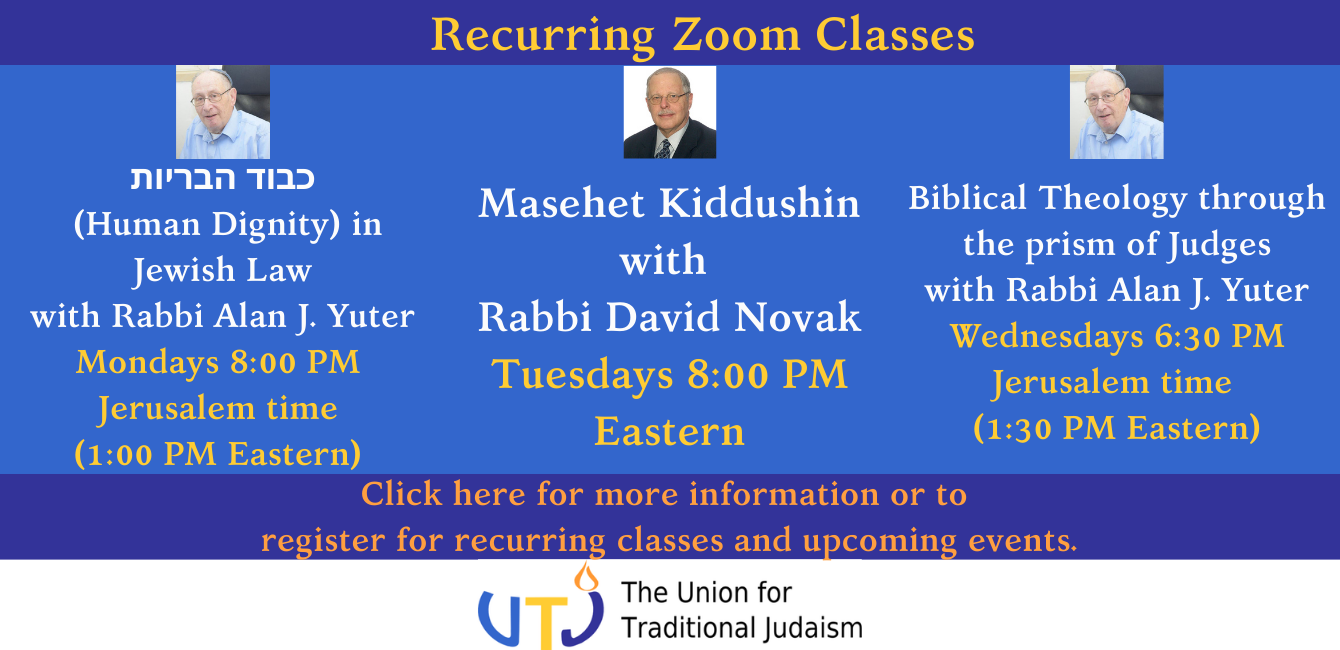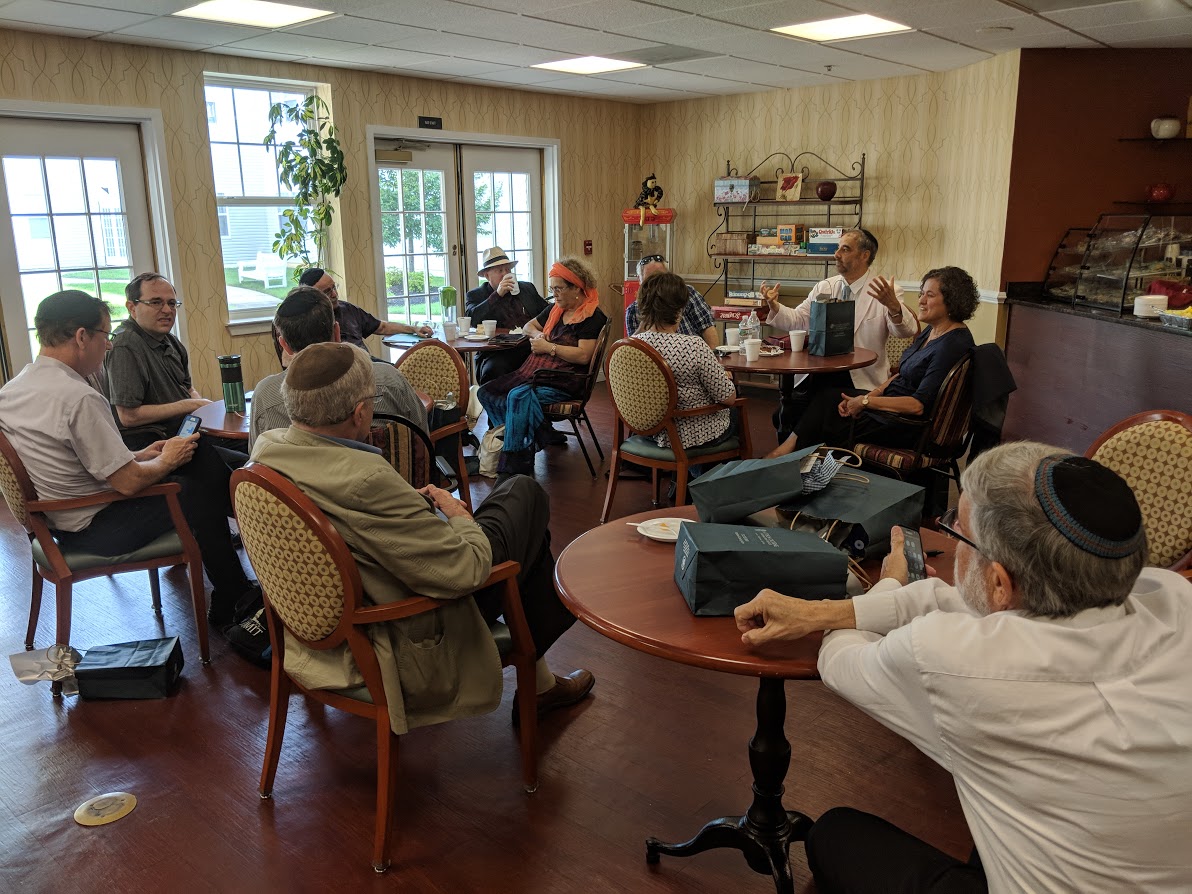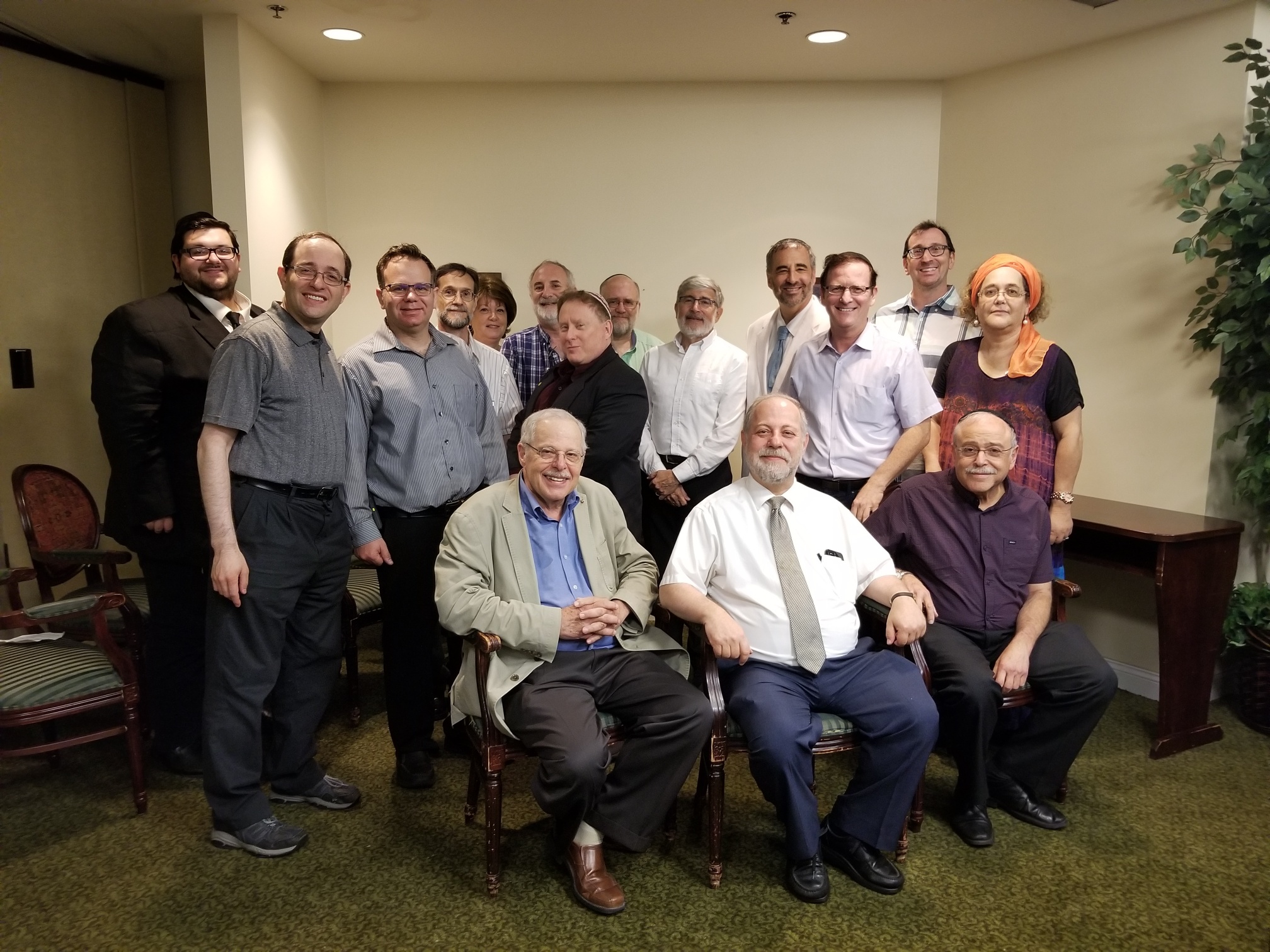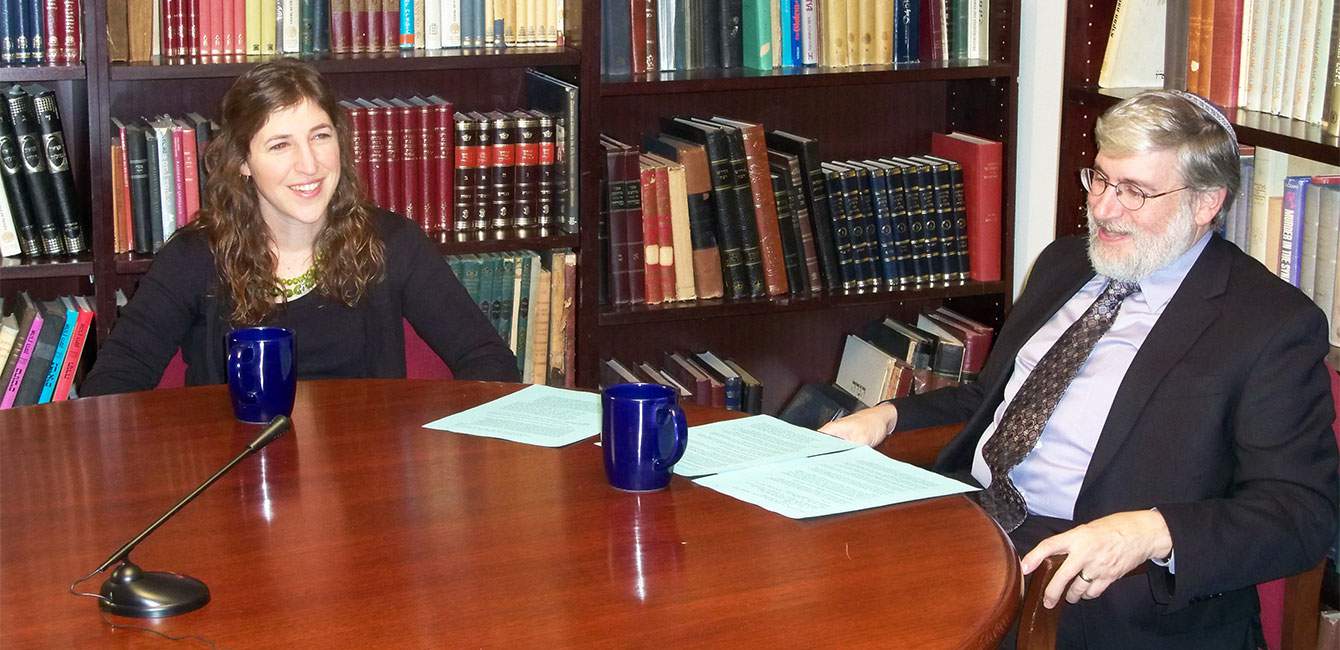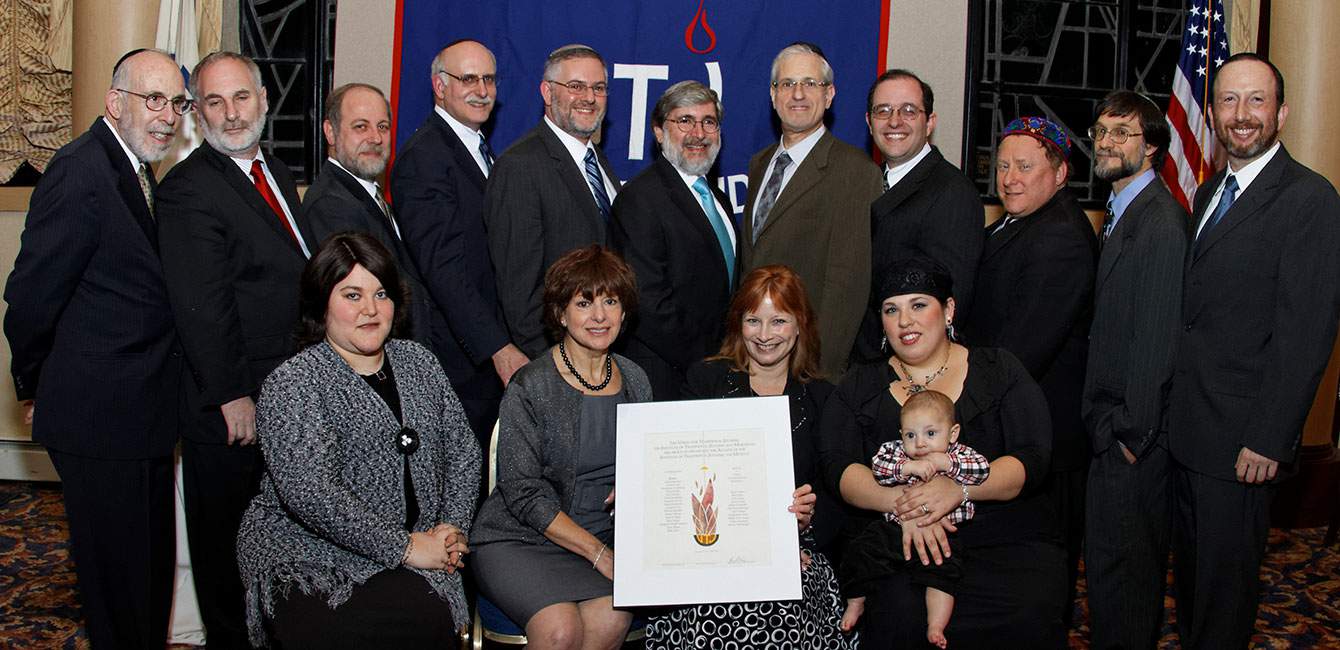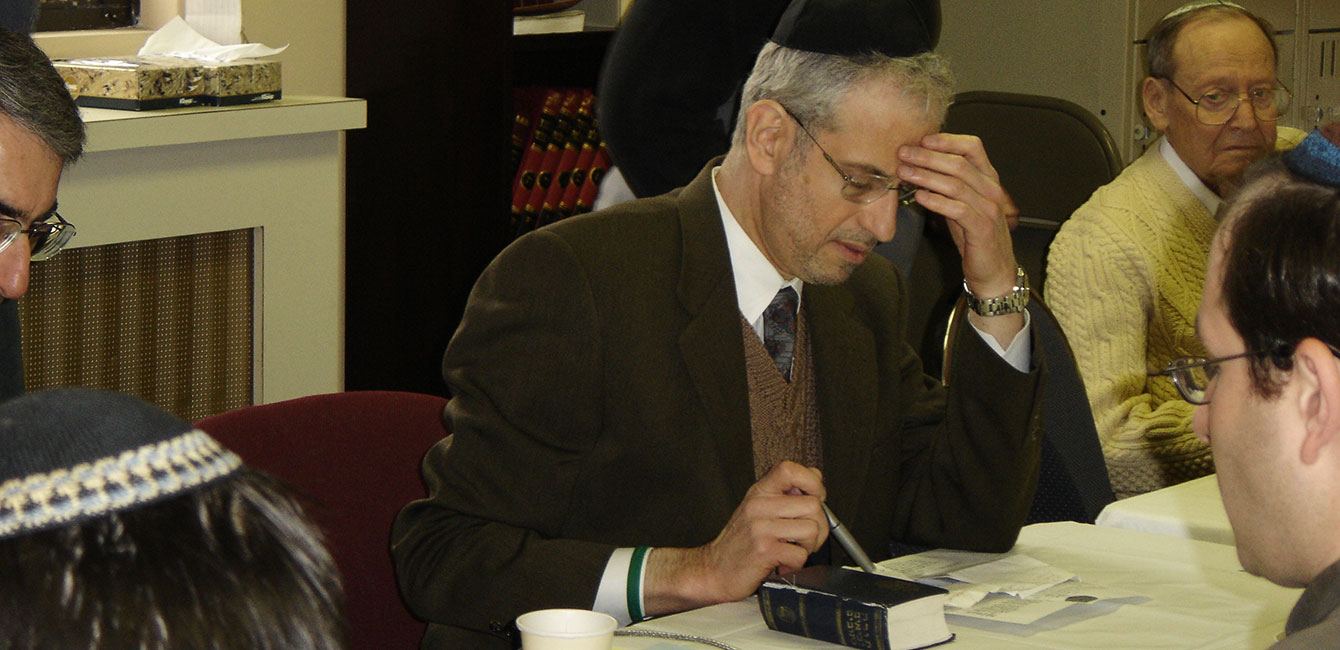by Rabbi Alan J Yuter
Disclaimer: The opinions expressed here are that of the writer and do not necessarily represent the views of the Union for Traditional Judaism, unless otherwise indicated.
The Low Down on the Height of the Mechitsa:
A Modern Orthodox Reading
The mechitsa in the synagogue, the partition separating women from men in the Orthodox shul, has evolved over time to be the defining distinction between what is “recognized” to be authentic Orthodox Judaism and synagogues that do not have high mechitsot have lower religious identities. People’s actual opinions and perspectives are conditioned by teachers and peers, rabbis and rebbes, congregations and communities, and peers’ and friends’ approval. The hyperbole that is attached to the mechitsa in the synagogue often leaves dissenters with the hard choice of remaining silent and compliant or being regarded as deviant from the community’s religious narrative. I do require mechitsa because it is a practice accepted by all Halakhically committed Jews, and universally accepted by all Orthodox Jews. Those who have removed their mechitsot have, in the large, abandoned Jewish law altogether.
Some Orthodox Jews allow their piety and ideology to be worn on their sleeves, for all to notice. The easiest and socially least expensive way to proclaim one’s own religious probity is by denouncing and distancing oneself from those whose probity—measured by their strictness— is not up to standard. Thus, lower mechitsot are mistaken to indicate lower religious standards in general. The social implication is that one cares less about God’s will if one is prepared to entertain a less than “respectably” high partitions and separations between the genders because they believe that the human animal thinks about nothing other than sex all day long [Gen. 8:21].
Authentically religious Jews look into canonical books and not to “great rabbis” whose political-theological narrative empowers them to reconstruct Torah and issue rulings on the authority. Judaism canonizes books, pagans canonize people. By issuing “rebbe” cards, we condition, petition, brainwash and tell our children to whom we believe they would do well to suspend their critical judgment and to defer [Deut. 1:17]. The authentic Jew respects all who are sincere but defers to God alone. We are saying that the real rabbis look, dress, speak and think like the card iconic heroes. They alone possess the holy spirit because the semiotic image apodictically says so. The modern Orthodox Jew learns Torah in order to discover the Narrative that God encoded in the Torah; ultra-Orthodoxy reads its own sectarian Narrative into the Torah.
In Talmudic literature, one finds the idiom “mechitsa” or wall partition with regard to plantings, to avoid mixing diverse seeds, the wall of the sukkah, and the eruv, or enclosure of courtyards into communal collectives. According to plain, grammatically correct sense canonical Oral Torah Jewish law, a kosher eruv requires [1] the area to be more enclosed than open, [2] the consent of every non-Jew and [3] non-observant Jew living within its perimeter. There is no mention of the synagogue mechitsa in the Talmud, Maimonides, or Shulhan Aruch. We do know however that at one time in Jewish history, men, women and children heard the Torah in the women’s section of the Temple on Yom Kippur and on the Sukkot holiday during the Haqhel ritual, may it be restored speedily in our time.
Rabbi Moshe Feinstein and others argue that the “great reform” [in Hebrew, tiqqun gadol] made on the intermediate festival day ritual of water drawing in the Temple is the “source” for the synagogue partition as biblical prohibition [bSukkah 51b]. A formal separation was made in the Temple based upon a difficult verse preserved by the Chronicler [I Chron. 28:19].
There are three difficulties with this reading. [1] One may not derive Torah law from a Biblical book that is not included the Torah’s five books, and Chronicles is one of the later Hebrew Scripture document to have been written, by all accounts. [2] The idiom tiqqun, enactment, is a human made law that by legal definition cannot be attributed to or assigned the valence of Scriptural obligation. This matter was also noted by the ultra-Orthodox Haredi rabbi Yom Tov Scwhartz, who answered [=to his view refuted] [Me’aneh] the letters, Iggrot, or responsa, of R. Feinstein. [3] Since we do not have basins, sacrifices, or necessarily raised women sections in the synagogue, or for that matter, perform animal sacrifices in the synagogue, the argument that the gender segregation is required in the synagogue because the genders were separated in the Temple is misplaced. After all, men were allowed to enter the women’s section on occasion, as noted above. It seems that contemporary Orthodox street culture is more concerned with sexual boundaries than applying the canonical restrictions canonized in the Oral Torah canon.
R. Feinstein was scandalized with mixed gender seating at the time of prayer, and he maintains that this mixing and contact, even if innocent and unintentional, violates the principle prohibiting levity or qallut rosh. According to the Talmud, one may not perform qallut rosh in a synagogue [bMegilla 28a-b]. I do not recall that qallut rosh ever referred to or was reified into a Torah law, and mixed gender synagogue seating is a violation of that category. While R. Feinstein is a staunch advocate of the synagogue mechitsa, he does not object to the eating that takes place in batei midrash, or small chapels of Hassidic prayer, treating them with the leniency that applies of a Torah study hall. While the Talmud never mentions or addresses mixed gender settings to be qallut rosh, eating in the synagogue most certainly is forbidden [bMegillah 28a]. R. Feinstein’s vehemence has carried the day in shaping Orthodox culture, and the mechitsa has become a defining institution in the street culture of social Orthodoxy.
Rabbi Joseph Soloveitchik contends that the synagogue gender separation is a Biblical law and the absence of the separation violates the rule of “thou shalt not see an object of nakedness” [Deut. 23:15], and he declares that the mechitsa/partition must be “attributed” to a rabbinic enactment. In order to convincingly stress the “Biblical” nature of the mixed seating prohibition in the synagogue, R. Soloveitchik cites a Torah verse to justify his claim. However, there are two problems with R. Soloveitchik’s argument. Rabbis living and issuing rulings after the Talmud, specifically after Ravina I and Rav Ashi [bBava Mezia 86a], which is the end of apodictic legislative rulings binding on all Israel, the right to issue apodictic rulings had lapsed. However great they may be in wisdom and learning, they do not possess the jurisdiction, authority, or Halakhically authorized right to derive new Biblical laws by applying personal, unvetted exegesis of Biblical texts. Such claims require not only a convincing formulation, they also require the considered review and vetting endorsement of the sadly now defunct religious Supreme Court of Israel, the Sanhedrin. Since the Talmud does not explicitly make the claim that mixed seating violates Biblical law, a claim to that effect is hyperbolic and a matter of policy, not piety. A learned rabbinic colleague suggested that R. Soloveitchik “must” be referring to Maimonides, “Laws of Shema,” 15:3, which outlaws praying in the presence of nakedness or excrement. But women by Jewish law must cover what by convention in the society she lives is covered, i.e., a woman—and man– may not dress provocatively. If women are properly clad, why would mixed seating by law be forbidden according to Torah law?
R. Soloveitchik allowed mixed classes at his Maimonides Day School for Torah study, which like prayer, may not be done in the presence of either nakedness or excrement. And since classroom furniture is often arranged in a fashion where the students see one another, there is greater danger of visual impropriety in the classroom than in the synagogue sanctuary. The claim that one may not fulfill the shofar requirement in a mixed seating setting is problematic. After all, a ritual slaughter who slaughters while naked has acted improperly, but the slaughtering is not disqualified either by the absence of the slaughtering benediction or by his lack of clothing [Yoreh Deah 1:10]. Perhaps R. Soloveitchik extended the prayer restriction metaphor implied by the shofar blast commandment as a prayer without words to carry all the rules of prayer. And perhaps he believed, not without justification, that the slippery slope of egalitarian antinomian allure offered by the Conservative Movement is too dangerous for Orthodoxy to tolerate, and emergency strategies and rhetoric are now politically appropriate [Maimonides, Mamrim 2:4].
The imputation of the mechitsa to a Rabbinic decree on R. Soloveitchik’s part is also a rather bold claim. According to the Oral Torah Law, if a rule is not recorded for citation, it is simply not a rule. After all, the Torah, being perfect, is tammim, or complete There are no secret, non-recorded laws memorialized in our Torah [Deut. 29:28 and 30:12]. The claim that a restriction “exists” by conceptual speculation or imputation but without authoritative citation violates Talmudic jurisprudence [mEduyyot 2:2]. The fact that an act has not been seen is insufficient to claim that the act in question may not be done. Given the absence of the synagogue partition in Talmudic texts extant or cited, the absence of mention of the synagogue mechitsa in the classical codes, and the fact that when the partition does appear in the synagogue, where the Tosafists report that the partition may be erected on Shabbat for “conventional modesty” on Shabbat [Tosafot to bShabbat 125b, s.v. ha-kol modin] together provide proof that the mechitsa institution is neither Biblical, as argued by R. Feinstein, nor Rabbinic, as maintained by R. Soloveitchik. The Oral Torah canon is silent and the historical evidence yields a custom the function of which is to avoid ‘erva,’ sexual improprieties. [see Maimonides, Forbidden Intercourse, 21:1-2]. Note well that the Orthodox “world’s” law is in reality a narrative, with ritual serving as choreography. In this “orthodoxy,” God’s word is recorded in a sacred library that is read and revered, but not applied directly in everyday life. The “great sage” is the possessor of the “Tradition” and since these great sages have spoken, their word, like God’s word, may not be subject to peer review because these sages are taken to be without peer. The fact that their claims may be rebutted is irrelevant. These rabbis’ charisma, not their demonstration that they are correct, is the source of authority, which by definition cannot be refuted.
Rabbis Soloveitchik and Feinstein likely believed that the mechitsa issue defines the contemporary Orthodox identity. The single-minded egalitarian radicalism of the non-Orthodox trends’ leadership elite, intent upon destroying Orthodoxy, needed to be neutralized. And given the fact that homosexuality has become normative for every non-Halakhic stream in Jewish life, Rabbis Soloveitchik’s and Feinstein’s fears a generation ago were intuitively almost prophetic. By drawing a line in the sand, and strengthening respect for our inherited Traditions, they successfully insulated and protected the lay thick culture of Orthodox life. But there was a cost to be paid by raising the mechitsa to the status of defining theological boundaries. Orthodoxy has become much too submissive to political authority, much less challenging on the basis of Oral Torah text, and all too gullible to popular mythology; authority people have replaced authoritative books. The charisma of person, intuition, and reputation have superseded the public, accessible Torah of Sinai.
The mechitsa issue has had a life of its own within Orthodoxy. The higher the partition, the higher the religious standard and implied piety of the synagogue. R. Frand, a teacher at Baltimore’s Ner Israel, compares R. Feinstein’s position to the even more strict Hungarian position. Frand does even not cite R. Soloveitchik’s less rigorous position at all. R. Efrayim Gruskin of Perth Amboy and formerly of Springfield Yeshiva in New Jersey, had the “policy” of not entering the buildings of Orthodox synagogues whose mechitsa did not meet his personal standard. Like R. Solomon Amar, at the time the Sefardic Chief Rabbi of Israel, invented artificial standards in order to disenfranchise those who do not meet his newer, “higher,” “somehow better” and contrived standards, Jewish law is reformed, albeit with a culturally conservative rather than liberal agenda. The Torah rejects both reforms of the Left and the Right at Deut. 4:2 and 13:1-6. The latter citation states clearly that when dreamers of dreams of false prophets make Torah claims, those claims are tested against the explicit, accessible, revealed Torah benchmarks, which Israel is to apply rationally [Deut. 13:4-5].
The claim that harder, higher, and stricter standards are more authentic is according to Jewish law an improper approach. “Fences” around Torah law are designed to keep the community from sinning, not to exclude Jews from the community whose practice, attitudes, and commitment are deemed to be below standard. These Jews are committed to Torah law but do not feel obliged to accept every new, parochializing excess. They are to have emunat hachamim [see Avot 6:6], faith in the virtual if not actual infallibility of Orthodoxy’s great sages. With a brilliant rhetorical stroke, Rabbis Soloveitchik and Feinstein wrote what appeared to be rational demonstration but in fact are narratives, the acceptance of which is the new condition of Orthodox identity.
Nadav and Avihu invented an invalid standard—they placed their own, unauthorized, “strange” fire upon the altar, and were destroyed for their sinful inventing of a false norm. The Torah legislates that one may neither add nor subtract from the Torah law. The job of new enactments is to sanctify but not parochialize the Jewish people. According to Jewish law, a 40” partition rises to the sky according to rabbinic rule of gud asiq, but this rule is never even cited in these conversations. By claiming that the mechitsa partition serves for segregation [R. Feinstein] or visual impropriety [R. Soloveitchik], we are offered plausible claims which, because they were not legislated as legal norm, do not carry Halakhic weight.
When “higher” ritual, social, or communal standards are imposed, we are really dealing with parochial instruments of social control. Rules created by latter day saintly rabbis are subject to review. We must insist that rabbis provide reasoned arguments and conversation; we must insist that narratives be restricted to sermons. Jewish law is based upon norms and principles, not by apodictic rulings of great rabbis who claim that only they have a right to make a reasonable Halakhic argument. This social/political tendency is easily corrected by permitting if not requiring a public discussion of legal principles, what actually justifies a legal ruling, and engendering the courage to be modern and Orthodox with religious and intellectual integrity. Beware of those who tell others to be modest; they often make claims that are unjustifiably immodest. There is something profoundly immodest in men who spend their days and nights intuiting what on the female body must be controlled to prevent them from sinning. In order to speak to the Left that is leaving Jewish life, Orthodoxy must become right with God and distinguish between what God said according to what is recorded in the Torah canon with those who claim, like the wicked, to know the mind of God or the purpose [telos] of the law. Those who preach the telos of God’s law are in fact invoking God to empower them to tell us to obey them uncritically. Maimonides identified this phenomenon not as modesty, but as idolatry [Laws of Idolatry 1:1-2]. The authentic Orthodox Jew is an informed consumer; she or he knows enough about Torah law to question the human exegete regarding the meaning, and application, of the law.
Enjoying UTJ Viewpoints?
UTJ relies on your support to promote an open-minded approach to Torah rooted in classical sources and informed by modern scholarship. Please consider making a generous donation to support our efforts.




